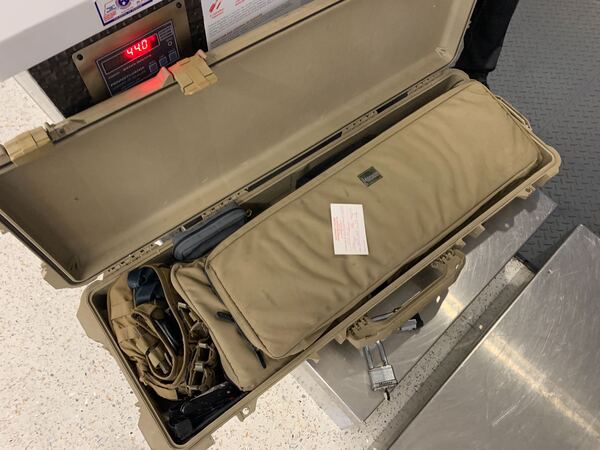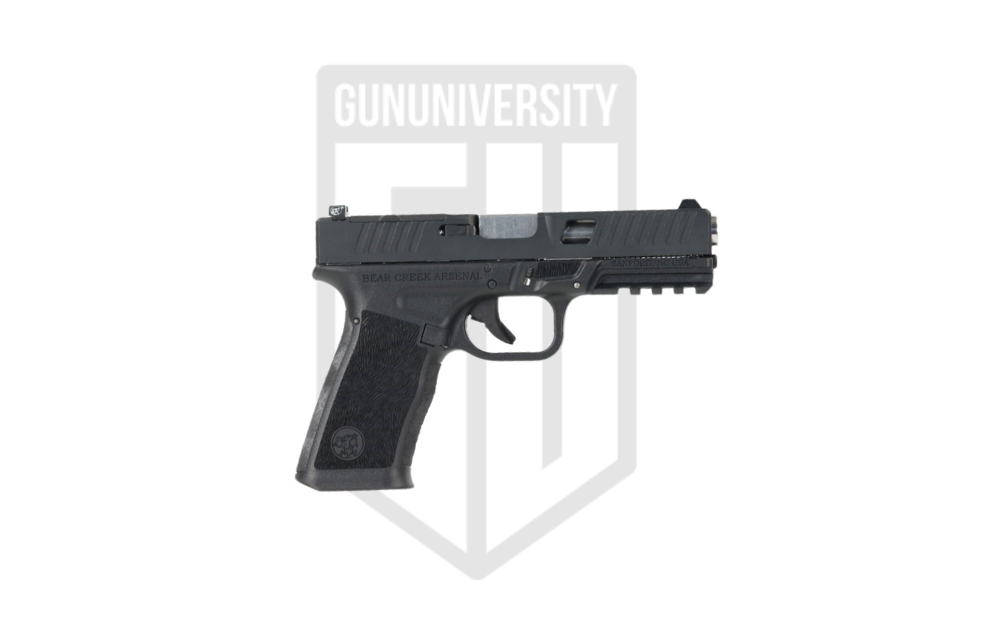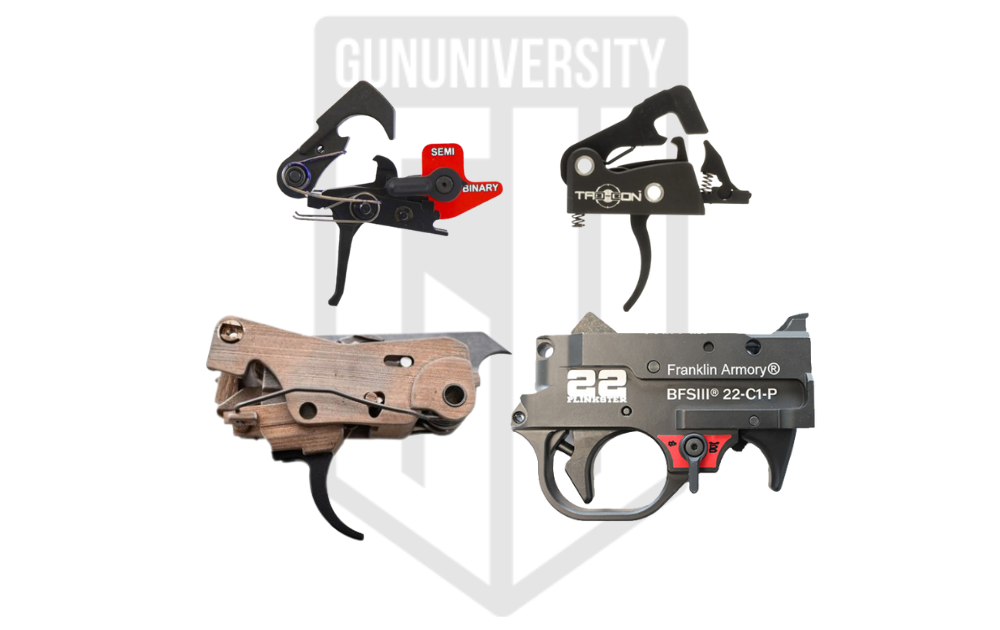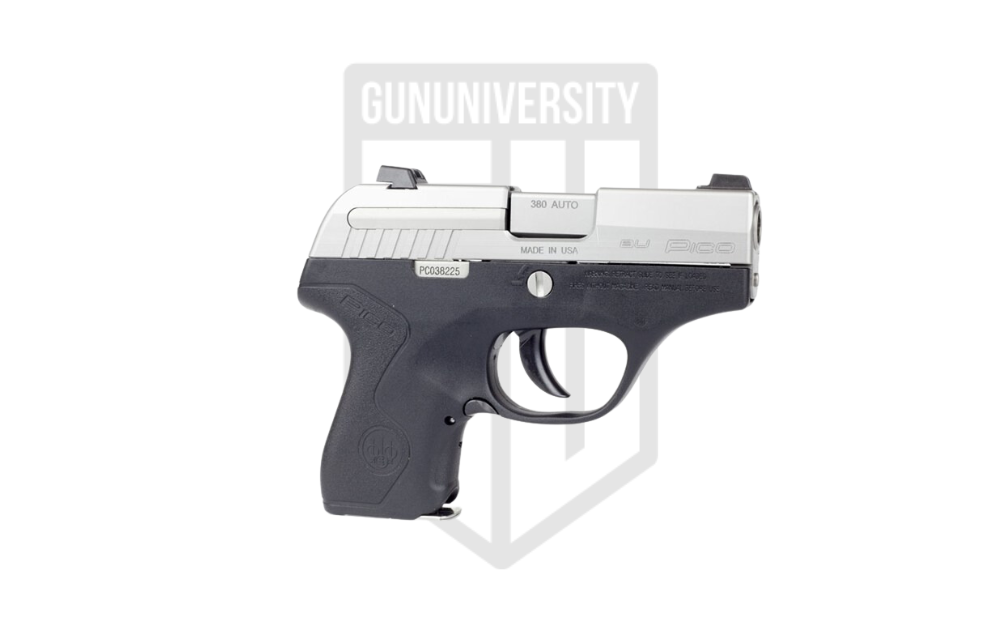How to Fly with a Gun: Written by an Attorney
One of the biggest questions I get a lot is how to fly with a gun? Or even more so, if someone can or cannot?
So, can you fly with a gun?
Contrary to what some believe, it is perfectly legal to fly on a commercial airplane with a firearm checked in your baggage. However, there are some specific rules that you must follow in order to be legal under federal law. Additionally, you must respect the laws of any state you are flying to.
In this article, we’re going to cover how to fly with a firearm.
However, before we get into this, I need to make one thing very clear. Yes, I am a firearms attorney; however, I’m not your firearms attorney. But I can give you advice from an experienced traveler’s point of view–albeit one with a legal background.
Steps on How to Fly with a Gun:
Below are the 5 steps to legally and safely fly with a firearm:
- Get a Proper Gun Case
- Use the Proper Locks
- Pack Your Firearm and Ammunition the Right Way
- Check-In and Baggage Claim Procedures
- Confirm Local Laws
Step 1: Get a Proper Gun Case for Air Travel
Getting the right case and locks for the trip is actually the easiest part of the whole process. And there’s a good chance that you already have a suitable case for the job.
According to TSA regulations, your firearm must be securely locked in a hard-sided case.
That’s it–on paper, anyway.
Technically, this means you can use your gun’s original hard plastic case, so long as it has the ability to be securely fastened. However, I don’t recommend this since those cases, are usually not the most reliable and air crew can still pry them open.
Therefore, when it comes to traveling with a firearm and using a handgun safes, you need something strong.er. To help with that, here is my list of recommend cases for traveling, including options for pistol and rifle.
Best Gun Cases for Flying
| Case | Details | Check Price | |
|---|---|---|---|
 | Vaultek Lifepod
| ||
 | Pelican Air 1485 Case w/ Foam
| ||
 | Pelican 1700 Rifle Case w/ Foam
| ||
 | Pelican Storm iM3200
|
Step 2: Get an Appropriate Lock (NOT TSA APPROVED)
When it comes to getting a lock, the official wording from the TSA states:
Only the passenger should retain the key or combination to the lock unless TSA personnel request the key to open the firearm container to ensure compliance with TSA regulations. You may use any brand or type of lock to secure your firearm case, including TSA-recognized locks.

And while the wording from the TSA says you can use TSA-recognized locks, DON’T DO IT. You have a responsibility to not let unknown people have access to your firearm(s). It’s actually a legal requirement that you don’t unlawfully transfer a firearm to someone else (especially in another state) and that you don’t allow prohibited persons to access your firearms.
This goes on my top ten list of incorrect things I hear in gun shops: often, an employee will tell people that they MUST have a TSA lock for traveling by airplane with firearms and they don’t realize that they are arguably encouraging someone to break a law.
If you didn’t know, a TSA lock is any lock with the Travel Sentry Logo on it. Avoid these when locking your firearms.
To avoid this issue altogether, get yourself some quality padlocks that aren’t TSA locks. Brands such as ABUS, Masterlock, and American Lock all make great options to put on your gun case.
Best Padlocks for a Gun Case
One of the biggest fears people have of flying with non-TSA locked gun cases is that the TSA will cut open your locks to get into your gun case. Although extremely rare, it is a possibility.
Step 3: Pack Your Guns and Ammo for Your Flight
When it comes to the proper way on how to fly with a gun, the biggest mistake people make when flying is not packing the firearm and ammo the correct way.
When packing your firearm case, the first thing you should ensure is that your firearm is NOT loaded. Check twice.
There shouldn’t be a magazine inserted in the firearm, and the chamber should be empty. At this point, you may opt to insert a chamber flag into your pistol to help further demonstrate that it’s not loaded.
However, don’t assume that whomever is at the ticketing stand understands what the point of a chamber flag actually is. You may still have to show a TSA agent or the airline’s ticket agent that your gun is indeed unloaded.

Once your firearm has been stowed, the next obstacle to address is ammunition. Ammo is actually pretty simple as far as the TSA is concerned. According to TSA regulations,
Firearm magazines and ammunition clips, whether loaded or empty, must be securely boxed or included within a hard-sided case containing an unloaded firearm. Read the requirements governing the transport of ammunition in checked baggage as defined by 49 CFR 175.10 (a)(8).
Small arms ammunition (up to .75 caliber and shotgun shells of any gauge) must be packaged in a fiber (such as cardboard), wood, plastic, or metal box specifically designed to carry ammunition and declared to your airline.
Simply put, this means that ammunition can be stored INSIDE the locked case with the firearm in three different ways:
- Loaded in a firearm’s magazines (but NOT in the firearm).
- In the original manufacturer’s box.
- In an ammo case designed to hold ammo.
Even though the TSA regulations say that the ammo should be in with the firearm, 50% of the time I travel with a firearm, someone at the airport insists that the ammo must be separate. My recommendation is to just go along with whatever guidance you’re given. In my experience, it doesn’t do much good to get into an argument with an airline employee. Remember, ending up at your destination smoothly is the desired goal not to start a fight mid-journey.
Two more things to note when preparing your case:
- The first is to watch your weight. No, we don’t mean calorie count. But be careful to ensure that your gun case doesn’t exceed the allowed weight due to the extra weight of your firearm and ammo. Also, you can only fly with 11 pounds of ammunition.
- Second, print out a copy of the TSA regulations before you head to the airport. That way if you run across a TSA agent or airline rep who’s unsure of the process and procedure, you can be prepared for whatever happens to come along.
Step 4: Checking and Claiming Your Baggage
This is the step that makes most first-timers fliers with firearms the most nervous.
And that’s likely because you’ve heard bad stories before and may have a lot of questions (that we hope we’re clearing up). But if you’re prepared, you’ll find that there’s really not too much to worry about. Stay confident and mild-mannered. Even if things don’t go to plan, if you do the right thing, it will all work out.
However, there are some very important things you MUST keep in mind.
- When you approach the baggage counter to check you bags, you must declare that you have a firearm. And using the exact words, “I am checking a firearm in my baggage.” Be aware that some passerby or nosy passenger may begin to panic if you simply state, “I have a gun.”
- If your locks use a key, triple check that you have your key as your bags are checked. You should maintain positive control over your firearm at all times, and that means holding on to your safe key.
- If you live in a state that requires special licensing or registration, or if you’re flying with NFA firearms, you should have all of your gun’s paperwork and your applicable licenses on hand.
- When traveling with a firearm safe, it’s also a good idea to cable it within your suitcase once verified. This makes your gun even that much harder for would-be baggage handling thieves to swipe your firearm.
- Keep a positive attitude the entire time. There may be questions that you find invasive or redundant. However, keep you cool, because it will only complicate the matter.
- Every single time you travel with your gun will be different. But that doesn’t mean that you should become argumentative. Keep a level head–I cannot stress this enough.
Picking Up Your Firearm at Your Destination
Once you’ve made it to your final destination, the rest is pretty simple. All that’s left is to pick up your gun, and be on your way. However, that doesn’t mean you can let your guard down.
Often, airlines will have a special baggage counter where they’ll receive sensitive checked-in luggage. And that’s where your gun should be for you to claim. You simply show your ID, claim stub, and off you go.
But airlines aren’t entirely consistent with this part of their job.
There’ll be times where your gun case will come out on the baggage carousel with everybody else’s luggage. And this is where things could go wrong. Your gun case will likely have an identifier on it marking it has some kind of prohibited item. And luggage thieves have come to know these signals. So, it’s best that you get to the carousel and patiently wait to ensure your gun doesn’t get swiped.
And don’t be that person who’s going to want to open (or concealed) carry your firearm out of the airport door. Wait until you get to your vehicle or final destination before opening up your case and accessing your load out.
If your baggage or firearm is missing it is a serious issue – handle it there and involve police if necessary. You don’t want to be responsible for the misuse of your firearm.
Step 5: Verify the Firearm Laws of Departure and Arrival Areas
Even thought this is a last step, this is a BIG one!
You may be able to lawfully have that firearm (or carry that firearm) in your departure state but you MUST be sure that it is lawful to possess and/or carry in the destination state.
This also comes in to play for places you may not have planned to go. There is an instance of a traveller whose flight was redirect to NYC because of weather. The airline put the passengers into a hotel and had the next flight out in the morning. Unfortunately, this passenger claimed his baggage with his gun, took it to his hotel, and then came back the next morning to check his firearm. Here’s the problem: it was illegal for him to possess that firearm in NYC. He didn’t want to be there, but he was.
He should’ve either left his bag with the airline or only asked to get things he needed for the night from his bag.
Some states and cities are pretty simple and friendlier to those traveling with guns such as Texas or Idaho. However, places such as New York City can be an absolute nightmare for those unaware of their laws and regulations.
The best bit of advice I can give is to ensure you’re following the Firearms Owners Protection Act of 1986–or “Peaceable Journey Law”–which allows you to peacefully pass through without really any interference.
However, there is a little caveat regarding your accessibility to the firearm that states:
Notwithstanding any other provision of any law or any rule or regulation of a State or any political subdivision thereof, any person who is not otherwise prohibited by this chapter from transporting, shipping, or receiving a firearm shall be entitled to transport a firearm for any lawful purpose from any place where he may lawfully possess and carry such firearm to any other place where he may lawfully possess and carry such firearm if, during such transportation the firearm is unloaded, and neither the firearm nor any ammunition being transported is readily accessible or is directly accessible from the passenger compartment of such transporting vehicle: Provided, That in the case of a vehicle without a compartment separate from the driver’s compartment the firearm or ammunition shall be contained in a locked container other than the glove compartment or console.
While this law explicitly implies driven vehicles, it also applies to air travel. And you should take this as absolute gospel especially in areas that aren’t as friendly towards gun owners.
So if for any reason during your travels (including flight cancellations, layovers, or extended delays) you need to leave the airport, leave your luggage with the airline. By reacquiring your luggage and staying longer, you are no longer passing through and can be held punishable to the fullest extent of the law.
Airline Specific Information for Carrying Firearms
TSA rules aren’t the only hurdle you’ll face when it comes to how to fly with a gun. Airlines will have their own specific set of regulations as well. While these aren’t the most restrictive, some of these rules differ from each other or are more stringent than TSA regs.
For example, Hawaiian Airlines states that no ammunition can be stored inside a magazine. While loaded mags are technically allowed via TSA, you still have to abide by the airline’s specific guidelines.
Here are some handy links leading to many of the major US airlines’ guns and ammo guidelines:
- Delta Airlines
- American Airlines
- Southwest Airlines
- Alaska Airlines
- Hawaiian Airlines
- Air Canada
- Spirit Airlines
- Jet Blue
- United Airlines
Flying Internationally with Your Gun
It’s not just domestic flights that you can take your gun on. Some countries even allow for you to bring your gun internationally. The same steps listed above still apply. However, you’re going to have to take special consideration with US Customs and Border Protection and the Customs Agency in whatever country you are traveling to.
Ready to Fly with a Firearm Legally and Safely?
So, there you have it – you now know how to fly with a gun. It may seem daunting and scary – however, if you follow these steps you should have no problem. Safe travels!
Recent Posts
July 26, 2024
July 26, 2024
July 25, 2024






![The Best Shooting Hearing Protection in 2024 [Tested]](https://gununiversity.com/wp-content/uploads/2021/09/best-shooting-hearing-protection.jpg)


I have a NY pistol permit and want to fly with a pistol and a long gun to Florida where I have a second home, however, I fly out of Newark, NJ and NJ does not have a reciprocity with NY, so am I allowed to have the guns (packed and locked for flying) in NJ long enough to drive through NJ and check in and get on the plane?
If an airline sometimes sends your firearm with the regular luggage, but should send it to special claims, what is the strategy to claim your firearm? Should I wait at the regular baggage claim until all baggage has come out before going to special baggage claim?
This is what I do.